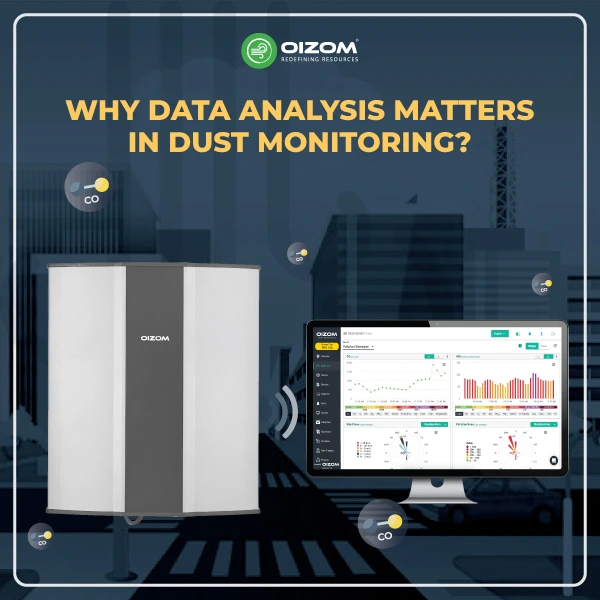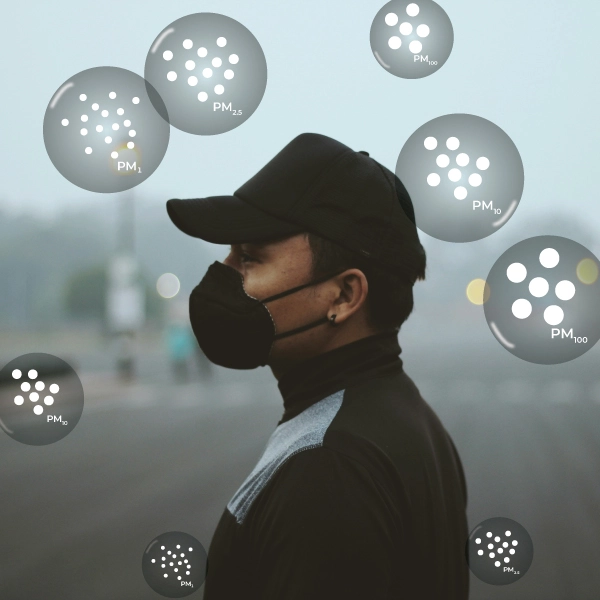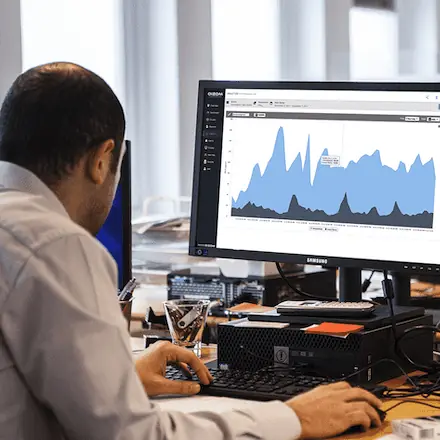Roads are the backbone of economic activities. They occupy a considerable area of our urban spaces and are primarily designed for vehicular traffic making them significant contributors to air pollution. The major air pollutants contributing to roadside air pollution are particulate matter (PM), NOx, CO, and SOx. Major sources of these pollutants are exhaust pipes of vehicles, wear & tear of tires, and deposition of road dust from vehicles.
Various notable steps have been taken in an attempt to tackle the problem like banning leaded (Pb) petrol, introducing cleaner and more efficient engines & fuel with the induction of successive Bharat Stage standards, etc. However, with incessantly increasing vehicular ownership, air pollution has become a very rampant issue.
As the saying goes; “You can’t control what you can’t measure”, Measuring air pollutant concentration is an absolute necessity for any pollution abatement strategy. Thus, air pollution monitoring provides crucial insights into the air pollution problem. Results of monitoring data help us understand the trend and pattern of pollutant concentration, the extent of pollution, and the dominance of specific pollutants, which resultantly enables us to identify potential sources of pollution.
However, roadside pollution monitoring can be tricky sometimes, particularly in urban areas. Due to its complex, varying design and topographic characteristics of roads, it creates a street canyon effect that influences pollution distribution by altering wind patterns.
OIZOM’s White Paper on the selection of monitoring location provides comprehensive and scientific information about how to select a monitoring location and how to carry out roadside pollution monitoring.
SMARTER ROADS AND HIGHWAYS WITH REAL-TIME AIR QUALITY MONITORING
Real-time air pollution monitors such as OIZOM’s Polludrone provide accurate pollution measurement at a very economical cost. Deploying the Polludrone with high spatial density can create extensive pollution exposure understanding. Data generated through such monitors can be effectively integrated into various systems, which enables multidisciplinary collaboration from various stakeholders. Roadside pollution monitoring data along with traffic and meteorological data creates a holistic picture of pollution contribution from vehicular traffic.
ROADSIDE POLLUTION MONITORING MAKE ROADS SAFER
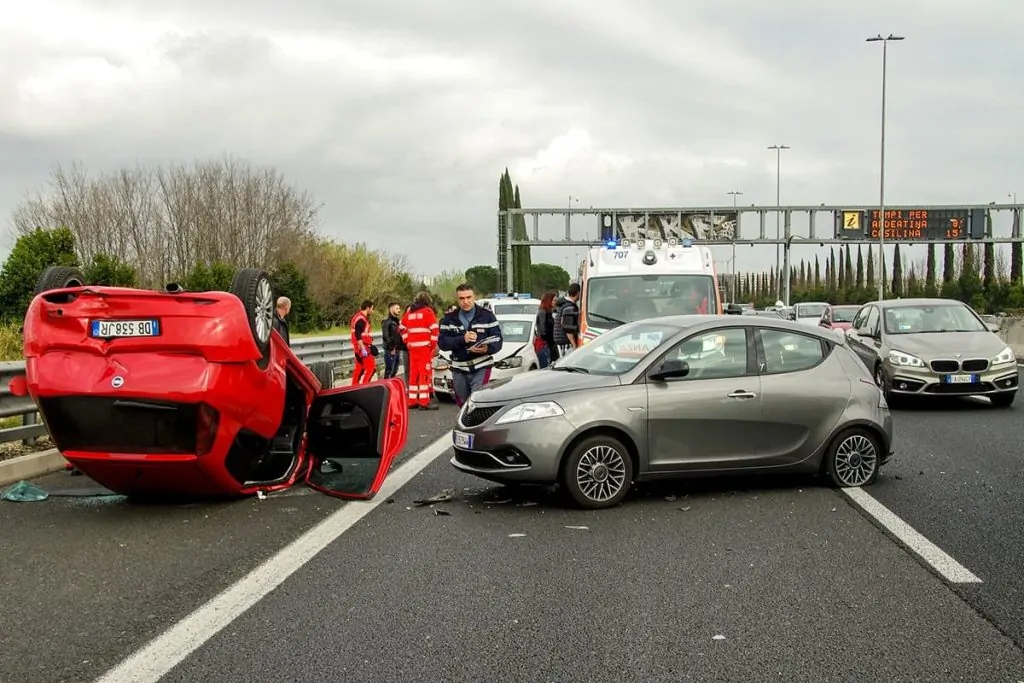
Road visibility is a major cause of traffic accidents around the world. Real-time air quality monitoring and visibility monitoring can effectively work as a warning system. Smart alerts for pollution level and visibility can be automatically sent to visual messaging display; alerting drivers to turn-on headlights, modifying speed limits, etc. to bring down accident hazards.
DATA-DRIVEN ENVIRONMENTAL AUTOMATION
Real-time air quality monitoring data can be integrated with smart dust suppression systems such as mist cannons. For example, when pollution limits exceed the predefined value on roadways, mist cannons automatically activate to reduce pollution levels on roads. Also, for tunnels and underpasses, where ventilation is crucial, effective and efficient ventilation operation can be ensured with the use of real-time air quality data.
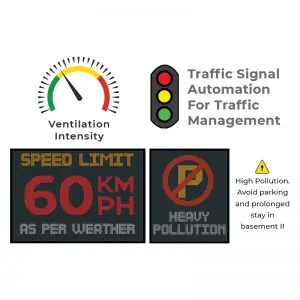
SMART ROADS ARE ALSO HEALTHY ROADS
For the majority of people, roads are the dominant pollution exposure spots. The daily commute and other day-to-day activities involve getting on a road and exposing ourselves to air pollution. Hence, with real-time roadside pollution monitoring and the advantage of high spatial density of sensor-based systems, unprecedented levels of pollution exposure detail can be developed. It enables hotspot identification, trend analysis, and pattern recognition.
All this data helps us in changing our actions in such a way so that pollution exposure is reduced. It also compels government agencies to take action towards pollution reduction – a principle that holds equally true in environments where vulnerable populations gather, such as schools, where monitoring air quality in educational institutions plays a vital role in safeguarding student health..
ROADSIDE POLLUTION MONITORING COMBINED WITH DISPERSION MODELLING
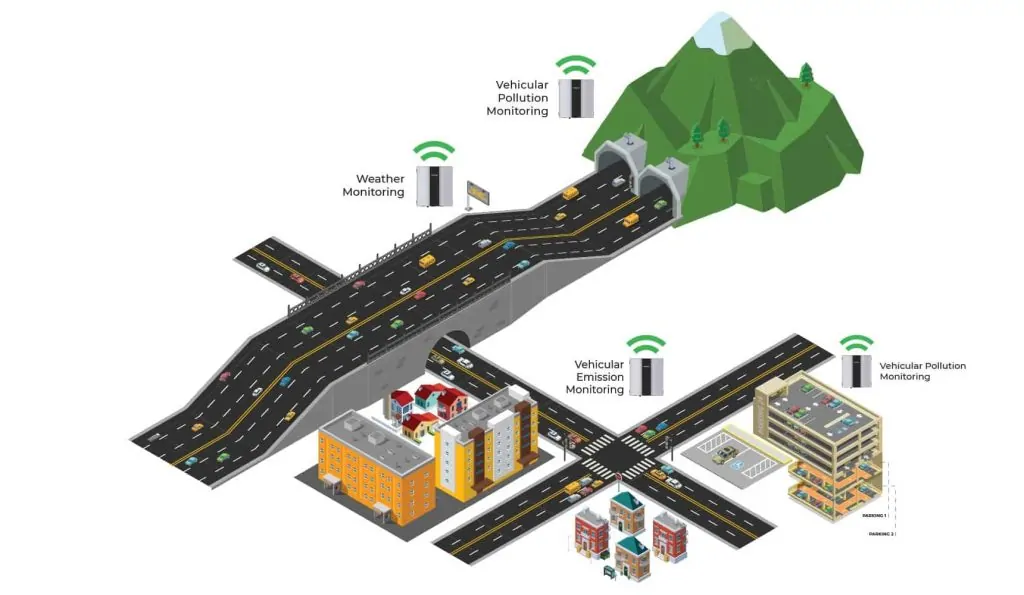
Highways usually experience heavy traffic, especially more polluting heavy-duty vehicles such as trucks. Therefore, It is very important to understand its effect on nearby residential areas, sensitive ecologies and farms. Dispersion modelling helps us in doing just the same. To carry out dispersion modelling, we must have accurate monitoring data.
Real-time air quality data provides high-quality input data to dispersion models. Based on the output of this dispersion analysis, steps can be taken to reduce the impact of air pollution, and make highways cleaner and more sustainable.
SMART AND INTELLIGENT TRAFFIC MANAGEMENT
To many people’s surprise, vehicles emit more pollutants when running at a low speed and highest when they are idling. Slow-moving traffic is also noisy traffic. To avoid traffic congestion, traffic signals need to operate in a very dynamic and optimized manner. For example, if at a cross-road, on observing a high concentration of air pollution, the light at the traffic signal can change accordingly to prioritize traffic flow in a particular direction.
Such a smart and intelligent system works in coordination and integration with real-time air quality monitors. It can significantly reduce traffic jams, noise and air pollution. Many European cities have already implemented such systems, which have significantly improved traffic management and air quality. Smart Cities Mission of India also mandates for similar smart traffic management technologies.
DEPLOYING OIZOM’s POLLUDRONE FOR MONITORING POLLUTION AT A HIGHWAY TOLLBOOTH
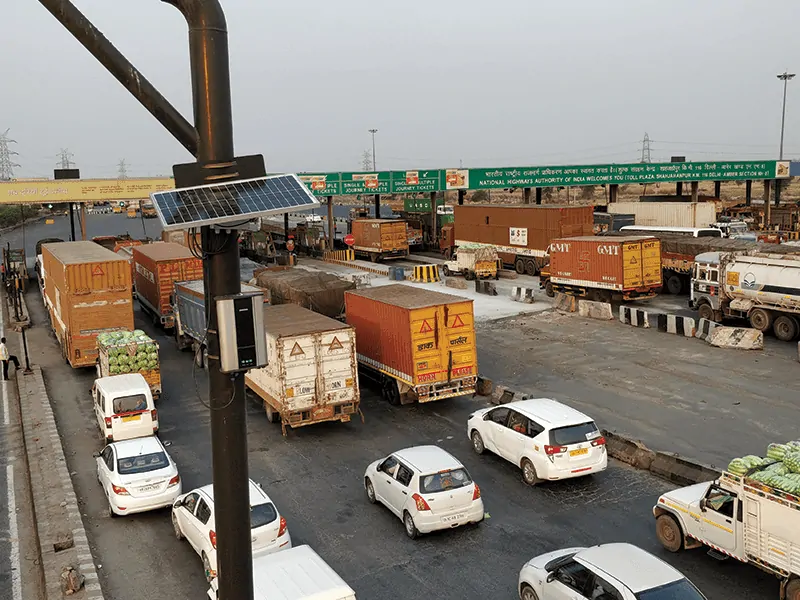
Vehicle speeds on highways are generally above 80 km/h. If vehicles stop from such a speed at a toll-booth, the braking and acceleration emit a high amount of air pollutants. On top of that, pollution levels may increase up to 8 times the normal levels of traffic congestion. Automatic toll booths can solve this problem, as you don’t need to stop your vehicle and the toll can be paid on the go.
OIZOM carried out air quality monitoring at one such automatic toll booth at Alwar, Rajasthan. The results showed a significant drop in pollution levels by just installing an automatic toll-collection system. It shows that data from real-time air quality monitors enables many data-driven solutions that are otherwise not possible.
OIZOM’s OFFERINGS
OIZOM offers environmental IoT and AI solutions and has a very comprehensive suite of products to measure air quality, odour, dust, and noise. The data analytics platform derives actionable insights from the collected data. Also, the data generated from these systems can be easily integrated into various systems to enable multidisciplinary and multi-stakeholder participation.
FAQ
- Road traffic emissions, including exhaust gases and particulate matter, contribute significantly to roadside air pollution.
- Industrial activities near roads can also release pollutants that impact air quality.
- Prolonged exposure to roadside pollution can lead to respiratory diseases, cardiovascular issues, and other health problems.
- Vulnerable populations such as children, the elderly, and individuals with pre-existing respiratory conditions are more susceptible to the adverse effects of air pollution.
- Implementing stricter emissions standards for vehicles.
- Encouraging the use of electric and hybrid vehicles.
- Promoting public transportation and carpooling.
- Investing in green infrastructure and urban planning techniques to mitigate pollution.
- While the government plays a crucial role in monitoring and regulating air pollution, individuals can contribute by adopting sustainable transportation options, reducing personal vehicle use, and supporting initiatives that promote clean air.
- Check your local environmental agency's website for real-time air quality data and reports.
- Some regions also have smartphone applications that provide air quality information based on monitoring stations near you.


